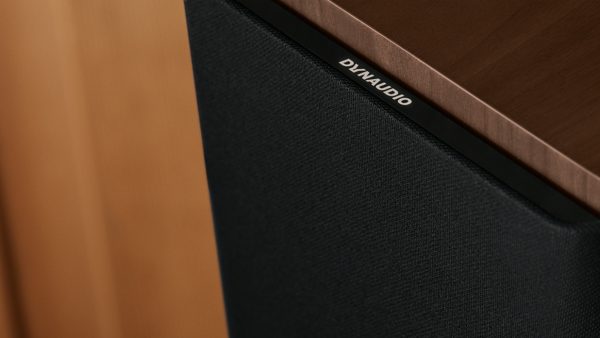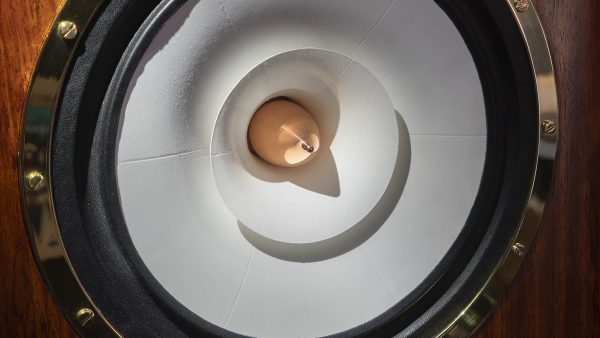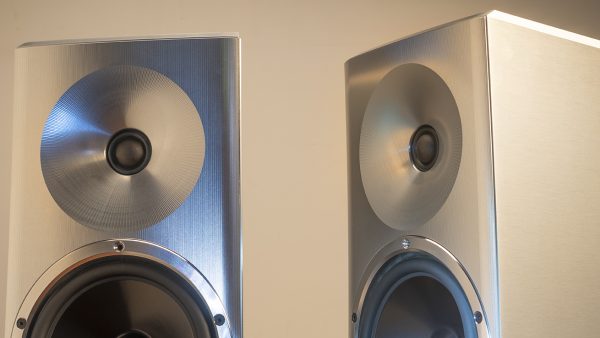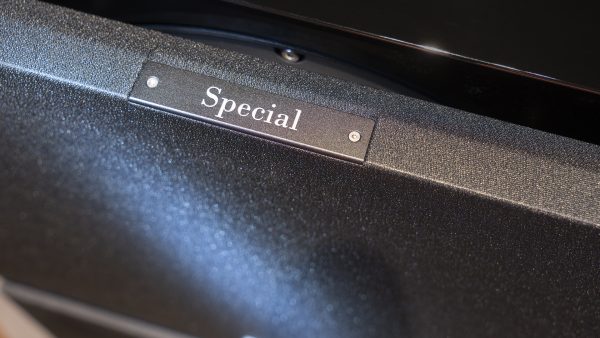Listening to Mr. Scruff’s “Spandex Man” at a reasonably high level shows off the incredible low-frequency response extension and control these $8,200/pair speakers can deliver. Yeah.
Greg Roberts, the man behind Volti, is quick to point out that he does not want to become the the world’s biggest horn speaker manufacturer – just the finest in terms of build and sound quality. Becoming enamored with the Klipschorns, he built his business on modifying and updating them for years before making his own. His upgrades for the La Scala, K-horn, and other Klipsch speakers are legendary, so he has a command of what it takes.
Volti speakers are a step beyond, and something special indeed. But as with so many designers, the limitations of what a large company can provide lead to the impetus to form a smaller, more specialized approach. Roberts has succeeded on all levels. He is quick to make it clear to me that “after years of being in business, he has found his sweet spot with Volti, doing what I love to do – making the world’s best horn speakers.”
The beats of Mr. Scruff are great, but with this much sensitivity at my disposal, it’s time to rock. The Afghan Whigs’ Gentlemen is an excellent record for this reason, as it is densely packed with information. Speakers with no subtlety render this record in a lifeless manner that sounds like a cassette from the late 80s. The Razz pass this test easily, keeping lead singer Greg Dulli’s commanding voice out in front of the layered guitars, pounding drums, and driving bass line. Not an audiophile standard to be sure, but music that begs to be played loud. As the review period goes by, much more of this will be done. These speakers consistently engage, regardless of the material.
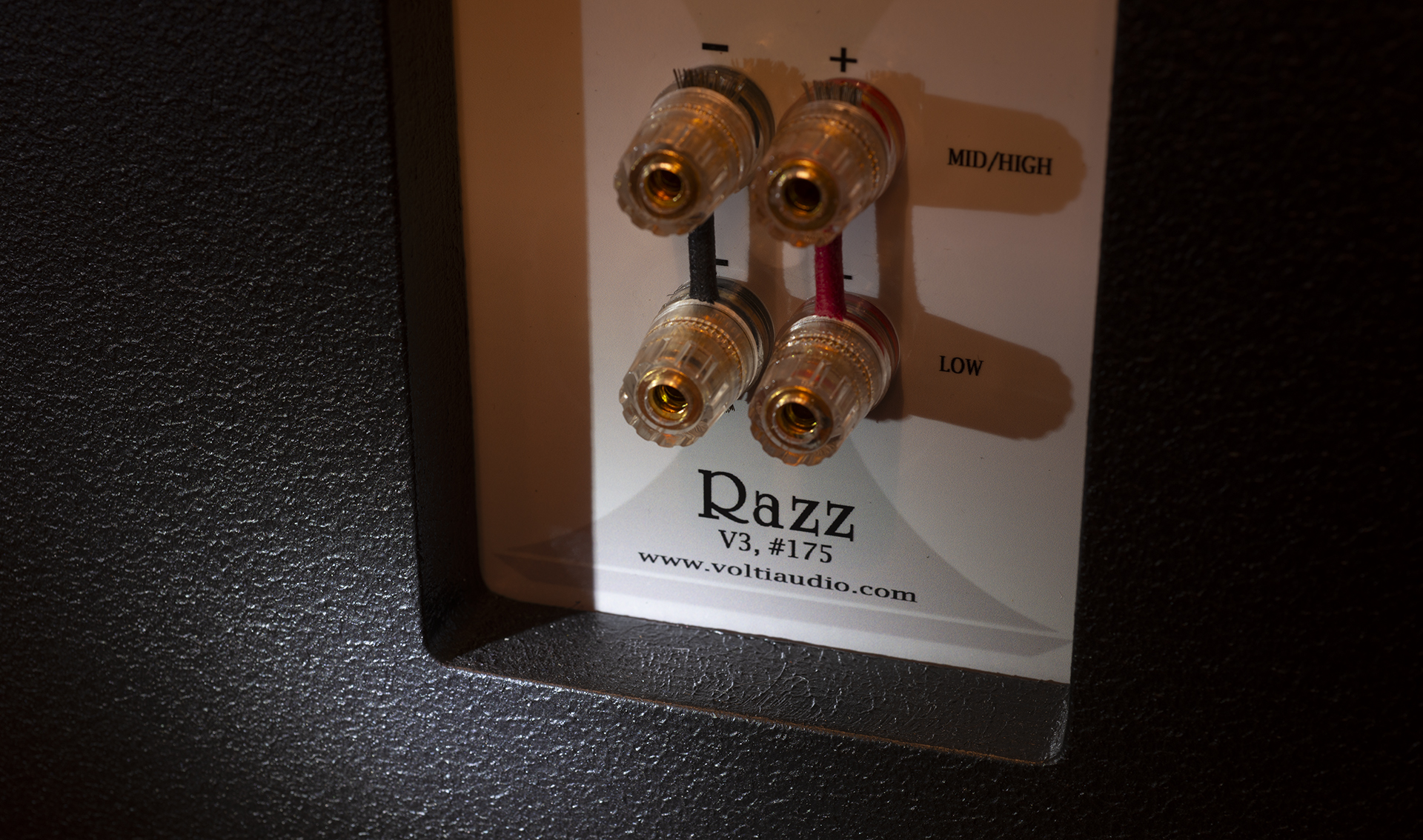
Unpack and set up
The Voltis arrive thoroughly double-packed and are out of their cartons in about 10 minutes. 90 pounds each means you might need a friend to help, so plan accordingly.
These speakers have broad horizontal dispersion and project a wide soundfield from ear level down. Still, their sound level falls off relatively quickly when you move up from your listening position, so adjust the seating accordingly. Should the Razz sound a bit “off,” move your head up and down from the listening position to see where the high frequencies are optimum.
The good news is that if you are not a speaker setup expert, you can achieve decent sound with fairly random placement. However, like any other highly resolving speaker, a few hours spent fine-tuning carefully delivers significant enough improvement in system resolution to make it worth your while. If you can start with things in an equilateral triangle, that will get you rolling.
If, after all the movement, you still find that it leaves you wanting more, there are individual resistors available for the midrange and tweeter levels. Save this as the last bit of fine-tuning if needed.
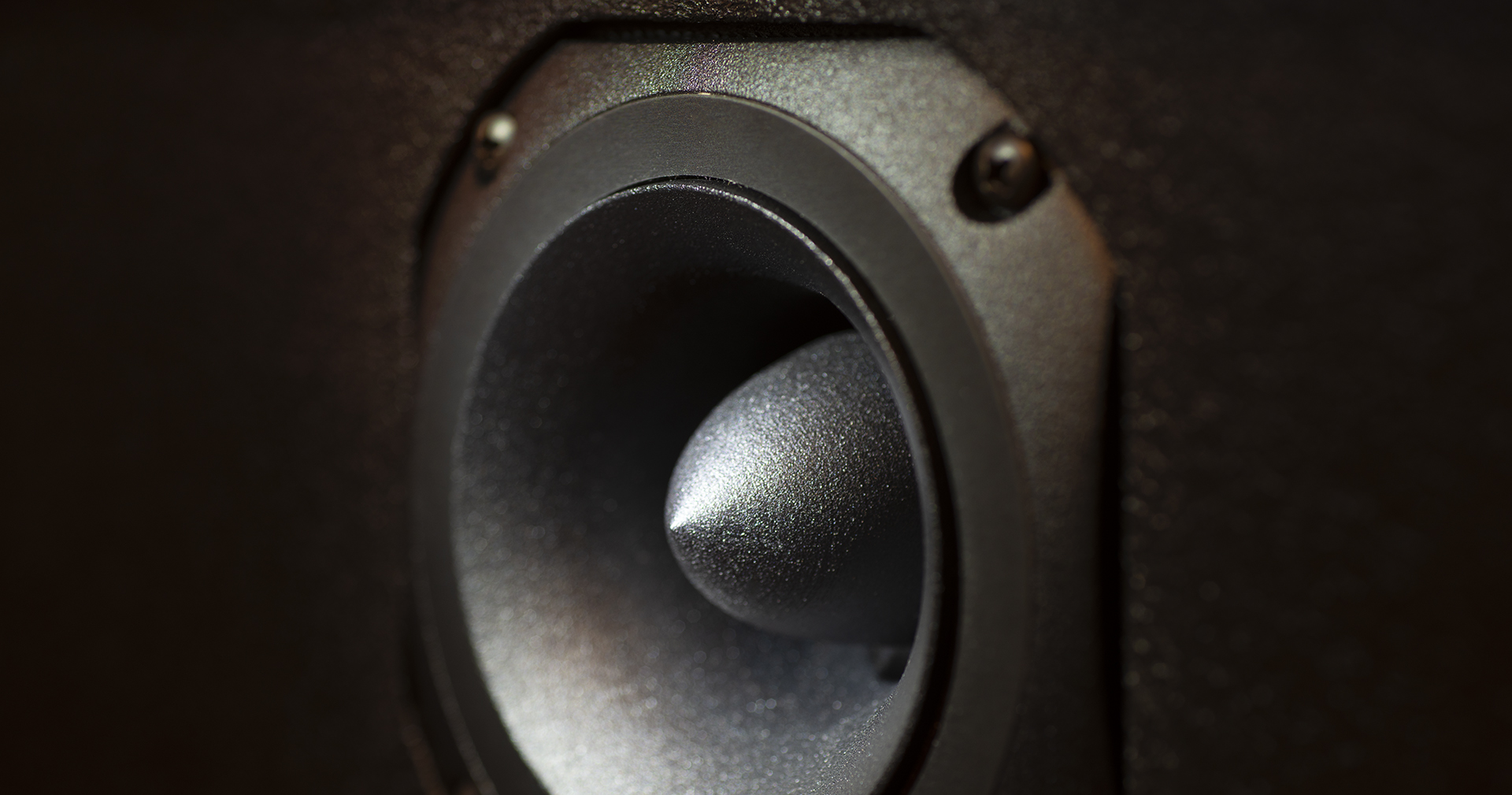
Anything but entry-level
$8,200 a pair might not constitute your first pair of speakers, but in the context of a $15,000 – $50,000 system, they could easily be your last. Roberts assures me that his next model up, the Lucera, offers quite a bit more performance. Hopefully, we’ll have the opportunity to verify this in the months to come. Fortunately for music lovers, you can only buy a pair of Volti speakers directly from the factory, which keeps the price much more reasonable. Roberts laughs as he tells me on the phone, “I build just as many speakers as I want to, to keep everyone here busy, but no more.” I completely appreciate and approve of this philosophy.
A variation on the Razz theme includes a pair of unfinished ones at $6,200 a pair. Volti suggests that “you don’t buy these,” but for someone counting every penny in a system and only cares about ultimate performance for the dollar, this is a cool alternative. Of course, being a craftsman to the core, he doesn’t see why you wouldn’t spend the extra $2,000 on the finely finished veneer and grill – and on many levels he’s right, you’ll never duplicate this yourself.
Does anyone remember when you could buy LaScalas in raw plywood? If you know your way around applying a good finish, that $2,000 will buy you a nice turntable! Still, it’s very cool that he offers the option.
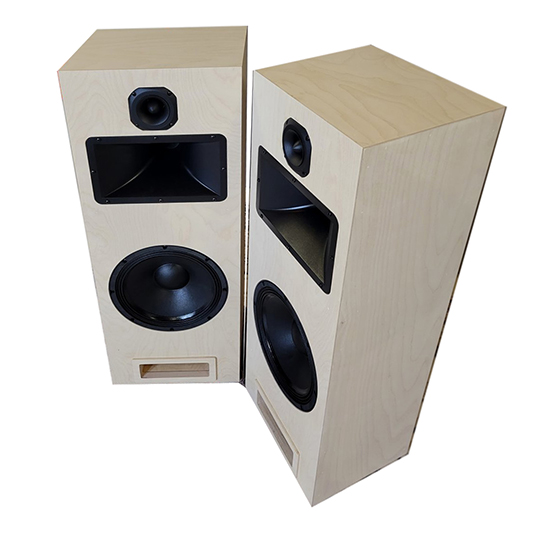
The result is excellence from top to bottom. These speakers sound great out of the box, but they feel more at home after a couple of days of use. So, prepare for a richer experience after about 40-50 hours, in every way. The Razz achieves even greater ease, a smoother top-to-bottom sound, and slightly more bass extension after a few hours of use. You should touch up the setup after a few weeks of play. Getting them to really rock is a breeze, with about 3 watts per channel. Volti claims an 80-watt-per-channel maximum, but we never came close to needing that much power. This leads to a warning – because these speakers play so loud with such low distortion, it might be beneficial to use a sound level meter on your smartphone to monitor your listening volume. I couldn’t find the breakup point of these speakers – even after listening to a relatively long playlist of Slayer, Mastodon, and Judas Priest.
The Razz delivers a full-range, full-bodied sound and excellent resolution. Blondie still sounds terrible, so it’s apparent that they do not round off the edges of leading-edge transients in any way. Just as it’s easy to get used to having a high-powered amplifier and the dynamic reserve it offers, the Voltis provide the same ease of delivery, thanks to their high sensitivity. Once you become accustomed to the level of openness these speakers provide, it may just make you a lifelong fan.
In deference to those with more audiophile sensibilities, acoustic and vocal tracks were auditioned, with excellent results. While female vocals do a better job of exposing flaws in the midrange to tweeter section of the crossover (along with driver selection), male vocals are more brutal in identifying problems extending from the midrange down. I lean heavily on that deep baritone from the lead singer in the Crash Test Dummies and Johnny Cash. Rest assured, vocal lovers, the Razz nails it at both ends of the frequency range.
Fine tuning
You say stairway, I say the reaper. There were several low-powered amplifiers to sample the Razz with, and each had a distinct flavor. PrimaLuna’s EVO400 is an excellent reference amplifier, as it offers the ability to operate in triode or ultralinear modes, each providing a distinctly different feel. Where the triode mode is softer and more expansive, the ultralinear mode is punchier and cleaner, extending from the upper midrange to the treble.
Your room, décor, hearing, and choice of music will determine what’s best for you. Where the EVO400 ships with a set of EL34 power tubes, mine sports a set of KT150s. While this provided the most power, the subtle smoothness of the EL34 in ultralinear mode ultimately prevailed, offering the best combination of sheer oomph and microdynamic retrieval.
Though not as resolving as the EVO 400, the PL EVO 100 with on board phono, and EL34s – only tipping the scale at 40 watts per channel is still plenty of power to have a ton of fun with the Razz.
The SET connection
At the very end of this review, the 91E from Western Electric arrived, so I asked Mr. Roberts for “a couple more days…” This proved exciting, as the two other SETs at my disposal both provided excellent results. If horns are your cup of, chances you are into SET’s as well. The best results were delivered with the $29,000 Songer A3 300B amplifier. This may be more than a Razz customer might want to spend. Still, this speaker’s ability to easily resolve the differences between my Triode Lab amp, the Songer, and the Western Electric, all at very different price points ($10k, $15k, and $29k), speaks very highly of their ability.
I must confess an affection for the WE amp; at $15k, it’s a lovely match for these speakers. At low to modest levels, the layers of texture that this amplifier, armed with the gold standard 300Bs, makes for an incredibly fulfilling experience. I’m sticking my neck out here and suggesting that if you are a SET enthusiast, you will really love the Razz.
Did you say solid state?
Auditioning a few class-D amplifiers on hand from ROSE, Java, and Naim all yielded equally mediocre results. This would not be my first, or even third, choice for a pair of these speakers. They are so sensitive, a 200 – 500-watt amplifier makes no sense to begin with.
I’ve always been a fan of low-power Japanese receivers from the 1970s. My two favorites are the Pioneer SX-424 (about 12 watts per channel) and the Marantz 2215 (about 15 watts per channel) You can pick up a mint example (and this means re-capped from head to toe) for under $500 and either of these deliver great results with the Razz. Add a great gently preowned table for a G, and you’ve got a rocking system for just under $10k. Moving up to a Marantz 2275, or my Sansui AU-717 rocks harder, but loses some of the magic.
If you’ve been a TONE reader for any length of time, you guessed it, I was smitten with the combination of a Pass Labs XA30.8 and the Voltis. The First Watt SIT-5 monoblocks are equally interesting, but where the XA30.8 sounds more tube-like, the First Watt monos sound a little cleaner and more extended. While I didn’t have time to commandeer one for this review, I suspect that a 25-watt-per-channel Luxman integrated would be an excellent match as well. These are no longer in production, but you can usually find a clean one from our buds at The Music Room for about $2,500. As a step up from a 1970s Japanese receiver, this provides modern Class-A amp technology and a significantly improved phono stage. And we’re still keeping the total system cost around $12k. (don’t forget the Prima Luna EVO 100 to stay in this price range if you want to go tubes) Or you can buy a used Hyundai with 90,000 miles on the odometer and an accident-filled Carfax report. I know what I’d rather have.

Listening position
As “unshout-y” as the Razz is, like any other dynamic speaker, there is a benefit to getting back from the speakers so the mid, woofer, and tweeter can integrate into a cohesive soundfield. In the big room, moving the couch back from 6 feet to about 15 feet gave different results. Ten feet made for the best integration of the drivers, yet maintaining the most detailed soundstage and pinpoint imaging. Moving a little closer proves more immediate, but at a loss of top-to-bottom cohesiveness. Heading further back makes the stereo image more diffuse. Of course, this is very personal, and you’ll find your spot.
That said, these speakers do a fantastic job at creating a sound field extending well beyond the speaker boundaries. With the Razz’ about 9 feet apart, they are about 7 feet from each of the side walls in my room. The best balance of low frequencies to midrange, while retaining bass extension works out to about 5 feet from the rear walls. Again, moving em back will increase room gain, so it will be up to you. With this placement, the Razz’ fill a 24 x 36 foot room with a couple of watts per channel, even with the most raucous rock records.
Great to listen at low volume
The Razz’s high sensitivity makes for great low-level listening. Unlike many speakers that need a few watts to really get going, the Voltis are clean, clear, crisp, and open even when playing at conversational levels. This makes it so much easier to engage friends when listening to music passively. Where many speakers are unfulfilling at a low level (72-78dB), the Voltis come alive, yet till deliver the goods when playing loud. Really loud.
That said, it’s almost irresistible to reach for that volume control and crank it up, because these speakers play loud and clean so effortlessly. I wouldn’t pigeonhole the Razz as a “Rock speaker,” because it has such an even, lifelike tonality. However, you just can’t enjoy music possessing major dynamic range on a pair of dinky monitors in the way you can with the Razz.
Grilles and such
You’ll notice our demo pair do not have grilles. That always has a certain cool factor, but the folks at Volti must have heard that I’m a scatterbrain when it comes to grilles and remote controls, so they didn’t ship them. Bravo. Take a quick peek at the Volti site to view the grille and finish combinations. I’m sure you’ll find something you love. Here’s a photo from their site, showing off the Razz with grilles.
Finally, it needs to be mentioned again how well the Razz enclosures are executed. These cabinets are incredibly solid to start, but the precision shown in every single joint. The quality of the finish is outstanding in every aspect. These speakers look and feel expensive. They would not look the least bit out of place in a Herman Miller or Knoll showroom, amongst their Mid-Century pieces – both in terms of style and finish.
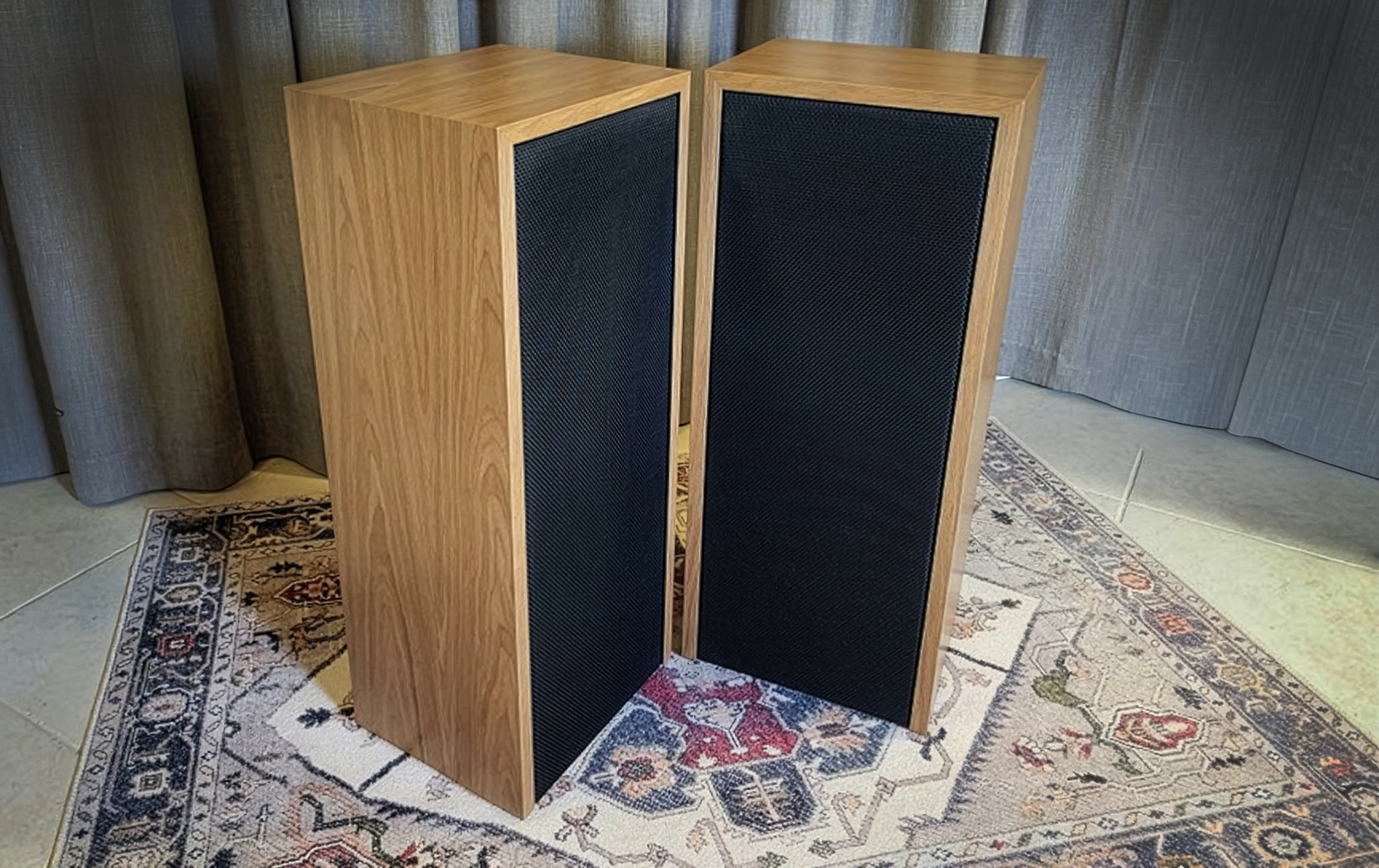
A definite winner
The Volti Audio Razz speakers are more than deserving of one of our Exceptional Value awards for the year. And, they’ve just had a price increase to the current $8,300 MSRP, so you should be safe for a while budgeting for this number.
So just as Ducati hasn’t put Harley-Davidson out of business, neither will Volti do the same to Klipsch. However, I think if you’ve come away from the horn thing wanting more – Volti is the way to roll. This is my very highly biased opinion, but I’m sticking to it. The Razz is tons of fun. Highly recommended.


